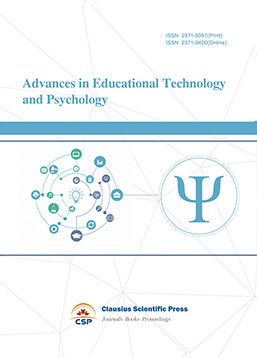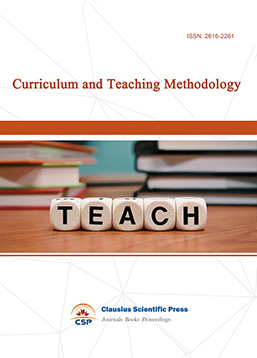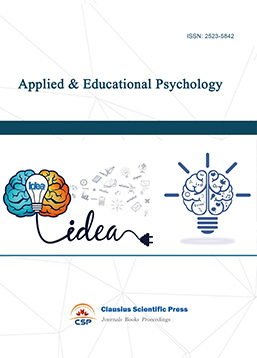Interdisciplinary Integration in High School Biology Teaching and the Cultivation of Students' Comprehensive Qualities
DOI: 10.23977/trance.2025.070102 | Downloads: 97 | Views: 1607
Author(s)
Fuquan Bai 1
Affiliation(s)
1 Yunnan Qujing No. 2 Middle School, Qujing, Yunnan Province, 655000, China
Corresponding Author
Fuquan BaiABSTRACT
This paper aims to explore the teaching design and practice of interdisciplinary integration in high school biology teaching and analyze its impact on the cultivation of students' comprehensive qualities. The research method combines biology with knowledge from subjects such as chemistry and physics through project-based learning and inquiry-based learning, and encourages students to solve practical problems from multiple disciplinary perspectives. The teaching implementation steps include early interdisciplinary lesson preparation and cooperation with teachers, mid-term independent learning through group cooperation and project tasks, and late stage deepening of understanding through actual cases, and continuous adjustment through classroom feedback. The evaluation system covers multiple dimensions such as knowledge mastery, innovation ability, problem-solving ability, and teamwork spirit. It comprehensively evaluates student performance by combining quantitative data with qualitative analysis. The experimental results show that interdisciplinary integrated teaching significantly improves students' performance in mastering and applying subject knowledge, innovation ability, critical thinking and teamwork. Specific data show that students' answer rate on interdisciplinary knowledge points has increased from 70%-90% to 90%-97%, the number of innovative solutions has increased significantly, and teamwork scores have generally improved, demonstrating the positive effect of interdisciplinary integrated teaching in improving students' comprehensive quality. Interdisciplinary teaching not only promotes the integration and application of students' subject knowledge but also stimulates innovative thinking and teamwork, proving its importance and feasibility in modern education.
KEYWORDS
Interdisciplinary Integration, Biology Teaching, Comprehensive Quality, Student DevelopmentCITE THIS PAPER
Fuquan Bai, Interdisciplinary Integration in High School Biology Teaching and the Cultivation of Students' Comprehensive Qualities. Transactions on Comparative Education (2025) Vol. 7: 9-17. DOI: http://dx.doi.org/10.23977/trance.2025.070102.
REFERENCES
[1] Priyadi U. Institutional Economics Lens: A Comprehensive Review on the Interdisciplinary Integration between Islamic Studies and Economics[J]. Kaav International Journal of Economics, Commerce & Business Management, 2023, 10(4): 47-54.
[2] Horn A, Urias E, Zweekhorst M B M. Epistemic stability and epistemic adaptability: interdisciplinary knowledge integration competencies for complex sustainability issues[J]. Sustainability Science, 2022, 17(5): 1959-1976.
[3] Peek L, Guikema S. Interdisciplinary theory, methods, and approaches for hazards and disaster research: An introduction to the special issue[J]. Risk Analysis, 2021, 41(7): 1047-1058.
[4] Akhmedova M T, Narmetova Y K, Nurmatova I T, et al. Communicative competence formation in future teachers based on an integrated approach[J]. International Journal of Multicultural and Multireligious Understanding, 2022, 9(4): 54-60.
[5] Kuziyevich M R. Future scientific potential personnel in education interdisciplinary integration and from dependence of use efficient methods[J]. Multidisciplinary Journal of Science and Technology, 2024, 4(5): 616-618.
[6] Pu L, Huang X. The interdisciplinary study and integration of disciplines for geography and resources science[J]. Journal of Natural Resources, 2020, 35(8): 1830-1838.
[7] Bertel L B, Winther M, Routhe H W, et al. Framing and facilitating complex problem-solving competences in interdisciplinary megaprojects: An institutional strategy to educate for sustainable development[J]. International Journal of Sustainability in Higher Education, 2022, 23(5): 1173-1191.
[8] Lent D D, Estes K M, Hansen A K. Increasing faculty involvement in the undergraduate interdisciplinary learning experience [J]. Integrative and comparative biology, 2021, 61(3): 1002-1012.
[9] Özenç-Ira G, Gültekin M. Making interdisciplinary connections through music: A systematic review of studies in general schooling context in Turkey[J]. International Journal of Music Education, 2023, 41(4): 631-650.
[10] Pasculli L. The Global Causes of Cybercrime and State Responsibilities: Towards an Integrated Interdisciplinary Theory [J]. Journal of Ethics and Legal Technologies (JELT), 2020, 2(1): 48-74.
[11] Mâţă L, Stoica I V. Pre-Service and In-service Biology Teachers' Attitudes towards Internet[J]. Journal of Innovation in Psychology, Education and Didactics, 2021, 25(1): 29-38.
[12] Otaqo‘ziyevna M T. Specific Features Of Interdisciplinary Issues Related To Newton's Laws At School[J]. Confrencea, 2023, 11(1): 165-168.
[13] Myers J K, Hughes M. Opportunities and costs: A self-study of coordinating teacher education programs[J]. Studying Teacher Education, 2021, 17(2): 122-142.
[14] Ghafar Z N. Evaluation research: a comparative analysis of qualitative and quantitative research methods[J]. Middle East Research Journal of Linguistics and Literature, 2023, 3(02): 25-32.
[15] Habumugisha T, Zhang Z, Ndayishimiye J C, et al. Qualitative and quantitative analysis of accumulation and biodistribution of polystyrene nanoplastics in zebrafish (Danio rerio) via artificial freshwater[J]. Environmental Science: Nano, 2023, 10(8): 2141-2156.
[16] Culver Joseph. Interactive Environmental Microbiology Teaching Based on Multimedia Technology. Academic Journal of Environmental Biology, 2020, 1(3): 28-35.
[17] Sahhil Kanvita. Experimental Teaching Design of Environmental Microbiology Based on Microalgae Culture under the Background of Big Data. Academic Journal of Environmental Biology, 2021, 2(1): 10-20.
| Downloads: | 14299 |
|---|---|
| Visits: | 552645 |

 Download as PDF
Download as PDF



